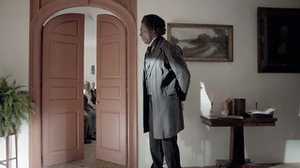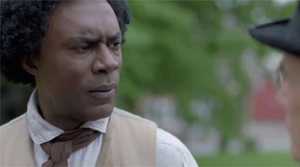The Making of The Abolitionists
When we first began the task of tackling the history of abolitionism four years ago, we were faced with a daunting task: the movement spanned decades, the leaders were numerous, the history complicated and the scholarly literature voluminous. And yet there was no book that told the overarching story of the abolitionists, and no guide for capturing the courage and struggles of these remarkable civil rights heroes. We decided that the way to grab the attention of a broad television audience was to focus on a handful of key characters -- that is, to create a character-driven mini-series set against the backdrop of a tumultuous time in American history.
Initially we chose to focus solely on the intertwined stories of Frederick Douglass and William Lloyd Garrison, largely because they are the best-known abolitionists and among the most important. The two men -- one a former slave, the other an impoverished printer -- are among the greatest civil rights activists in American history. They opened the eyes of thousands and put their families at risk to erase the sin of slavery. They had tremendous respect for each other and stood together for many years before, sadly, having a bitter falling out. Though they never fully reconciled, the ties between the two ran deep. When Garrison died, Douglass wrote a eulogy of his former mentor that was transcendent and profoundly moving.
The relationship between Douglass and Garrison forms the backbone of our mini-series. As historian John Stauffer points out, "To see how their two lives both evolve for awhile in parallel and then diverge and eventually converge again is a way to frame the broader themes of the abolitionist movement. It shows the movement's internal debate over fighting slavery through the political process, which Garrison rejected and Douglass came to embrace. It covers Garrison's pacifism and Douglass' advocacy of revolutionary violence. It shows both men's huge embrace of feminism. So focusing on these two men is an ideal way, in my view, to frame the entire abolition movement."
Although the film was originally conceived as a dual biography, over time we realized that structure didn't fully recognize the tremendous contribution of women to the antislavery cause. The abolitionist movement succeeded in large part because of women who spoke out publicly against slavery -- a role many people, including some in the movement, considered unseemly and provocative.
We chose to feature one of those early feminists, Angelina Grimké. She was one of the first women to ever speak to audiences that included men, and she gradually began connecting her belief in the rights of black Americans to the rights of women, causing great upheaval within the anti-slavery movement. In addition, she is all the more intriguing because she was herself a former slave owner. Grimke revolted against her slave society, left home to take up the antislavery cause, and urged other southern women to do the same. As one of the few abolitionists who had experienced slavery first-hand, she proved invaluable to the movement.
To advisor and historian Lois Brown, the abolitionist movement was a like a river formed from many diverse tributaries -- something the film captures well. "The primary figures represent different and really compelling pieces of the story of America's move from enslavement to freedom," Brown says. "Frederick Douglass makes his way towards freedom, and in many ways Angelina Grimké and William Lloyd Garrison -- two people who by all accounts are free -- also make their way to freedom. The power of this film lies in the way that it pays attention to the networks that develop. Each of these primary figures, these heroes that we behold, does come to a moment of real reckoning for themselves, where they have to make the decision, whether or not they are going to live a life of tortured silence or whether they are going to speak their minds and believe in their hearts, and go forth without any guarantee that the world will listen or will improve."
The abolitionists were originally deeply committed to non-violence, but after a decade of struggle many began to wonder if slavery would ever end without violence. This tension is key to the history of the movement. Douglass himself began to have doubts. He was encouraged to put his pacifism aside by his close friend John Brown, who urged Douglass to join his small band of armed men in a raid on Harper's Ferry. As much as any other single event, Brown's raid escalated tensions between proslavery and antislavery forces, and helped push the nation closer to war.
Finally, the project did not feel complete without the inclusion of the publication of Harriet Beecher Stowe's Uncle Tom's Cabin. Unlike our other characters, Stowe was not a life-long abolitionist. Initially, she disdained the movement, but her own experience of tragic loss, and her exposure to slavery, changed her mind. Her book -- the best-selling novel of the 19th century -- would win the hearts of Americans and, in the words of one scholar, convert millions "to being against slavery."

Sharon Grimberg is Executive Producer of The Abolitionists
Published in 2013









